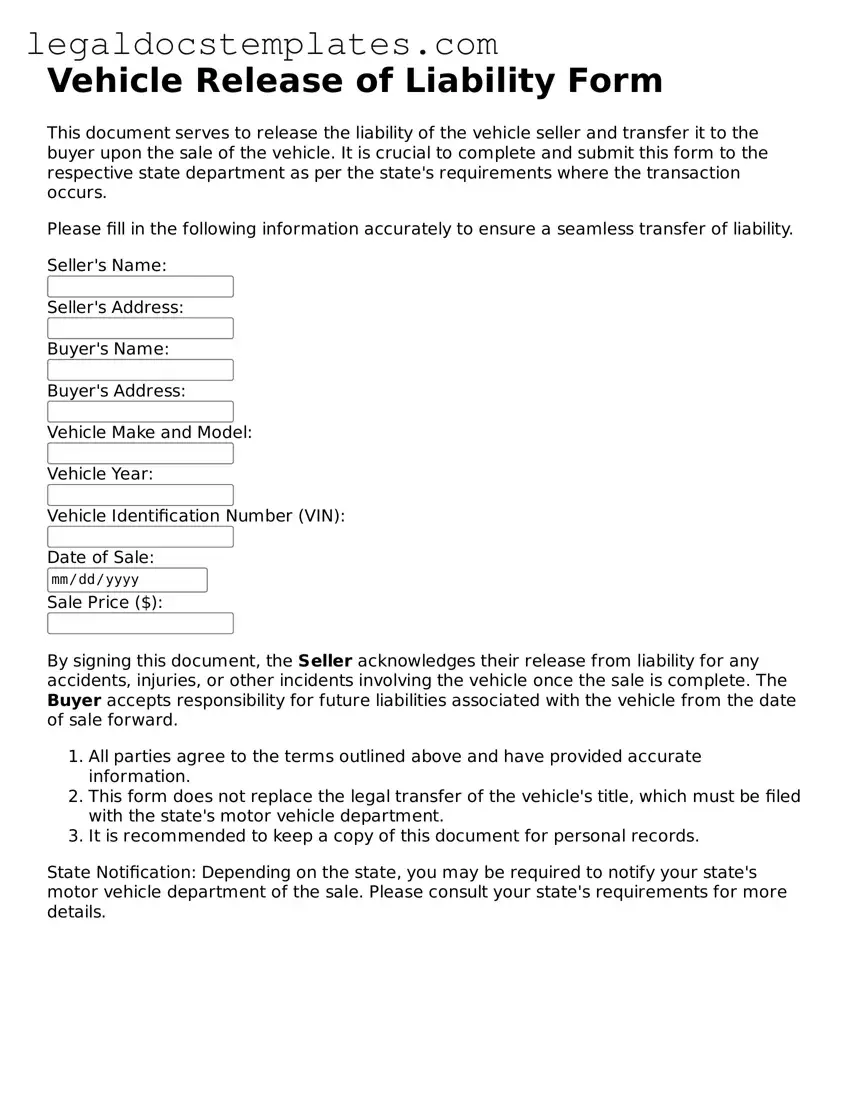When individuals undertake the process of transferring vehicle ownership, the completion of the Vehicle Release of Liability form is a crucial step. A common mistake is not verifying the information against the vehicle title or registration documents. This oversight can lead to discrepancies in key details such as the vehicle identification number (VIN), make, model, and year. Accuracy in these fields is essential to ensure the form's legal validity and to prevent potential disputes during or after the transfer process.
Another often overlooked aspect is the timely submission of the form to the relevant department or agency. In many jurisdictions, there is a specified window within which this document must be submitted following the sale or transfer of the vehicle. Failure to adhere to this timeframe can leave the seller liable for infractions, fines, or accidents involving the vehicle even after it has been sold. It is, therefore, important for individuals to be aware of and comply with these submission deadlines.
A significant error made by some is neglecting to obtain the buyer's complete and correct information. Essential details include the buyer's full legal name, address, and, in some cases, their driver's license number. This information is critical for accurately transferring responsibility and ensuring that future communications or legal notices are correctly directed to the vehicle's new owner.
Incorrectly assuming that the Release of Liability form absolves the seller from all future vehicle-related liabilities can also lead to misunderstandings. While this form is a key document in relinquishing responsibility, it does not necessarily cover all types of liabilities or obligations. For instance, if there are existing loans or liens against the vehicle, the seller might still bear certain responsibilities until those debts are cleared.
Many individuals also fail to keep a copy of the completed and submitted form for their records. Retaining a copy is vital for personal records and can serve as proof of submission if any disputes or claims arise post-transfer. In the event of a legal contention, having a copy of this document can significantly simplify the resolution process.
Filling out the form with incomplete details is another common mistake. Every field in the form serves a purpose and leaving sections blank may result in the form being rejected or the process being delayed. Sellers should ensure that all requested information is provided and that no applicable sections are overlooked.
Underestimating the importance of legibility can also hinder the process. Knowledge that forms filled with illegible handwriting may lead to processing errors or delays is not sufficiently widespread. To counteract this, sellers ought to complete the form in clear, legible handwriting or, if permitted, fill it out electronically.
Lastly, some people mistakenly believe that completion of the Vehicle Release of Liability form is the final step in the transfer process. However, it is often just one part of a series of required actions. Additional responsibilities might include transferring the title, notifying the insurance company, and securing a release from the county or state tax office. Understanding and completing all necessary steps ensures a thorough and legally sound vehicle transfer.
